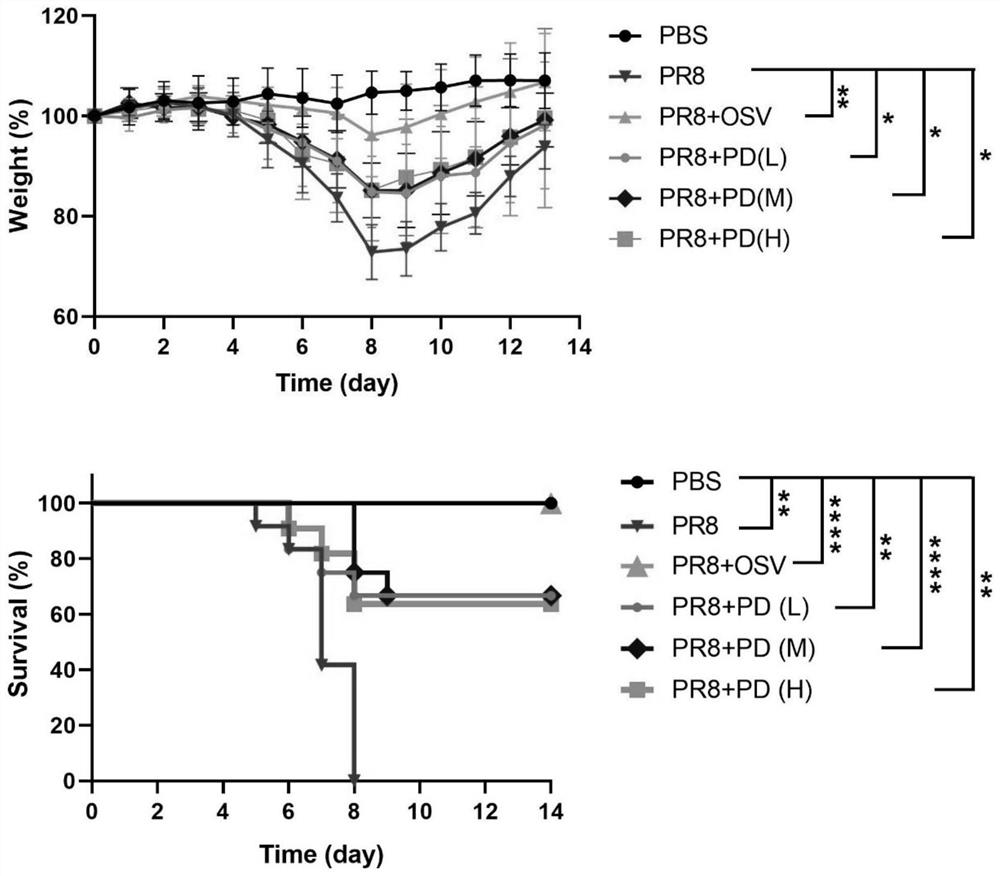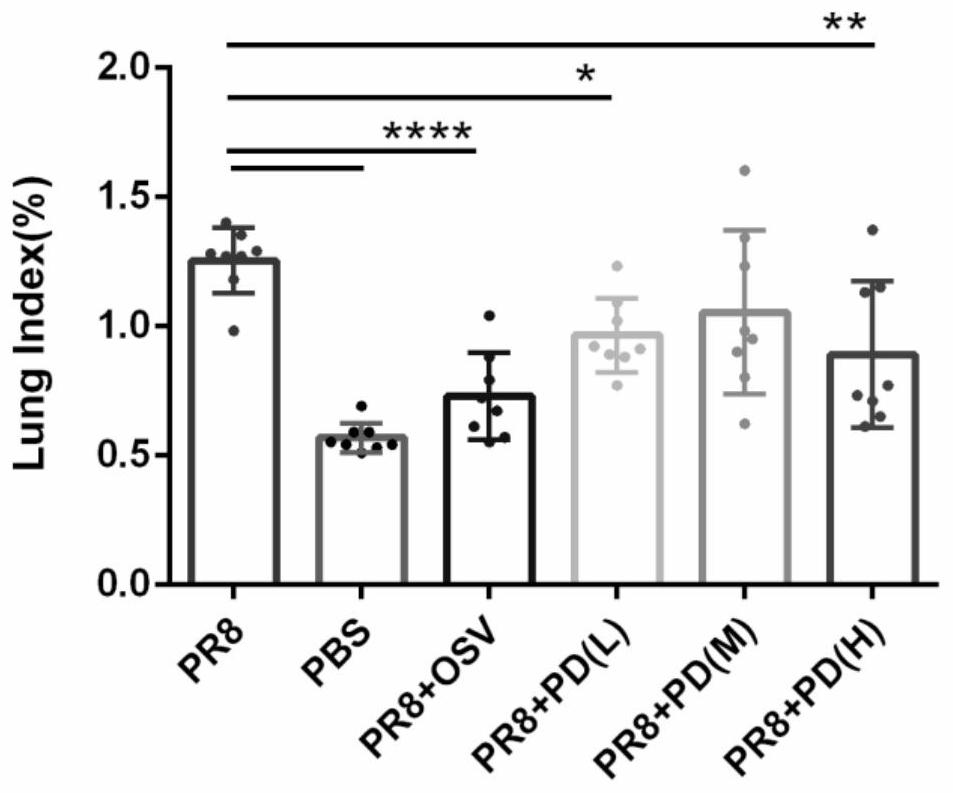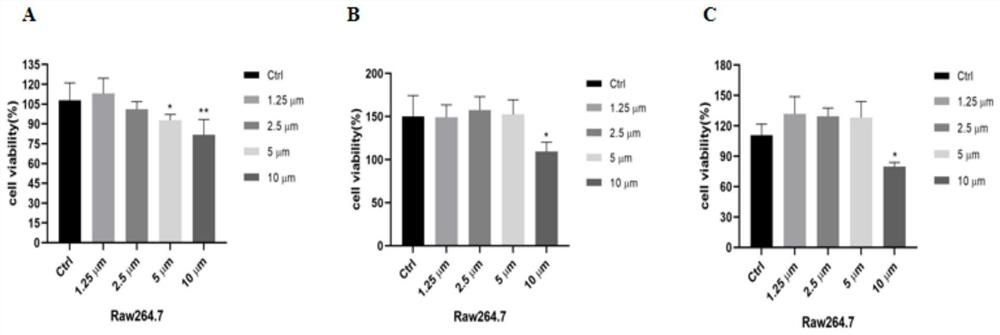Application of platycodin D in treatment of acute lung injury caused by viral pneumonia
A technology for viral pneumonia and acute lung injury, applied in the field of biomedicine, can solve problems such as no reports on the application of Platycodon grandiflorin saponin D, and achieve the effect of improving symptoms and high safety
- Summary
- Abstract
- Description
- Claims
- Application Information
AI Technical Summary
Problems solved by technology
Method used
Image
Examples
Embodiment 1
[0034] method:
[0035] To establish a severe infection model induced by influenza virus PR8 infection, 72 C57BL mice were adaptively fed for one week and divided into a normal group (12 mice) and a model group (60 mice) according to the random allocation method. Model preparation method: Mice were lightly anesthetized by inhalation of isoflurane, using a 100 μl pipette to draw 50 μl of diluted influenza virus solution, and inoculated through the nasal cavity to establish a model, normal group PBS, model group PR8, PR8+ positive drug group OSV (30mg / kg), PR8+ drug group PD (low dose: 1mg / kg, medium dose: 2mg / kg, high dose: 4mg / kg), administered two hours after modeling, the day of modeling is Day0, according to the mouse Body weight was given by intragastric administration, and after 7 days of continuous administration, the body weight of the mice was continued to be observed until the 14th day of continuous observation, and the daily body weight changes of the mice were recor...
Embodiment 2
[0038]Method: RAW264.7 cells were evenly seeded in 96-well plates, and cultured in a 37-degree cell incubator for 24h, 48h and 72h. Then add 10 μL of different concentrations of PD into the plate, use the same pipette to add 10 μL CCK8 solution to each well of the 96-well plate, incubate the 96-well plate in the incubator for 4 hours, use a microplate reader to measure 450nm Absorbance was used to detect cytotoxicity.
[0039] RESULTS AND CONCLUSION: Different incubation times found that PD below 10 μM did not show obvious cytotoxicity, and PD above 10 μM showed cytotoxicity ( image 3 ).
Embodiment 3
[0041] Methods: Influenza viruses are single-stranded RNA viruses. Imiquimod (Imiquimod, R837) is a synthetic single-stranded RNA that can mimic influenza virus nucleic acid, which is also a single-stranded RNA, in vitro. Therefore, we first used R837 to stimulate the mouse macrophage cell line Raw264.7 cells to construct a macrophage model of influenza virus infection.
[0042] RESULTS AND CONCLUSION: PD (1.25, 2.5, 5 or 10mM) significantly reduced the proinflammatory cytokines IL-6, TNF-α, human macrophage chemoattractant protein MCP in Raw264.7 cells induced by R837 (5mg / mL) -1, the secretion of type I interferon IFN-β, and at the same time, promote the secretion of anti-inflammatory cytokine IL-10 induced by R837 ( Figure 4 ).
PUM
 Login to View More
Login to View More Abstract
Description
Claims
Application Information
 Login to View More
Login to View More - R&D
- Intellectual Property
- Life Sciences
- Materials
- Tech Scout
- Unparalleled Data Quality
- Higher Quality Content
- 60% Fewer Hallucinations
Browse by: Latest US Patents, China's latest patents, Technical Efficacy Thesaurus, Application Domain, Technology Topic, Popular Technical Reports.
© 2025 PatSnap. All rights reserved.Legal|Privacy policy|Modern Slavery Act Transparency Statement|Sitemap|About US| Contact US: help@patsnap.com



